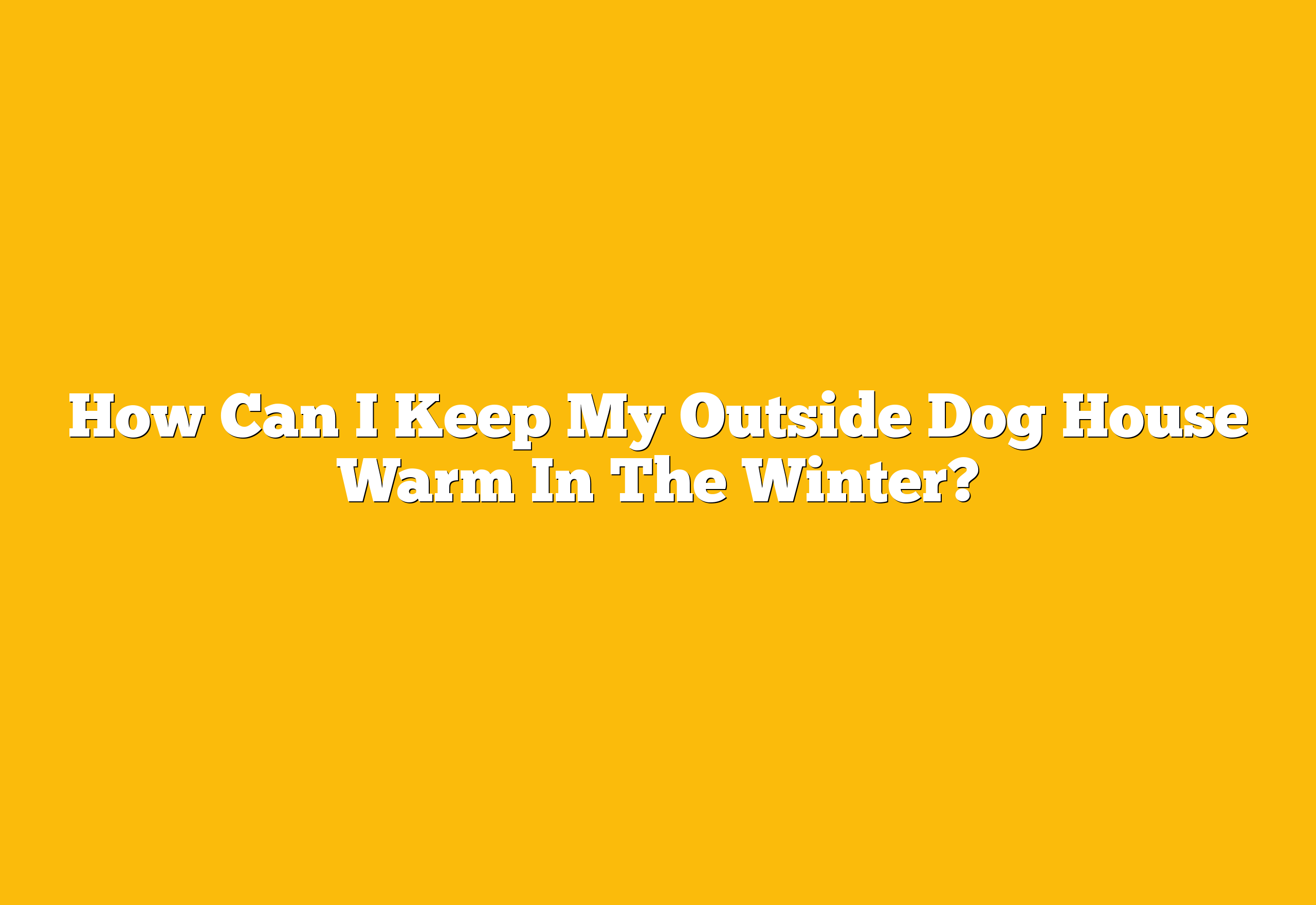It is possible for dogs to live outside in a dog house, but it is important to consider the weather, housing requirements, and healthcare needs of your pup before making such a decision. Although some breeds are better suited for outdoor living than others, no matter what type of dog you have you should be aware of the risks associated with leaving them outdoors. With careful planning and proper preparation, canine companions can enjoy their freedom while staying safe and comfortable in their own backyard.
Weather Considerations
When considering whether or not a dog can live outside in a dog house, one of the most important factors to consider is the weather. Extreme temperatures, both hot and cold, can be dangerous for dogs and can lead to health issues if they are not taken into account. In climates with extreme heat, it is important to ensure the dog house is kept cool by providing shade from the sun and access to plenty of fresh water. Additionally, depending on how much direct sun the area gets, it may be necessary to provide a fan or air conditioning for additional cooling. In cold climates, it’s important to make sure the dog house is insulated and that there is adequate bedding such as blankets or straw available to keep your pup warm. It’s also crucial that you check on your pup frequently when temperatures are colder than usual as dogs are more susceptible to hypothermia than humans.
Housing Requirements
When it comes to housing a dog outdoors in a dog house, there are certain requirements that must be kept in mind. The most important factor is the size of the house. It should be big enough for your pup to stand up and turn around comfortably. It should also be waterproof and insulated to protect them from extreme temperatures. Additionally, make sure the door faces away from prevailing winds, as this can help increase the temperature inside.
The roof should extend several inches beyond the walls of the house to provide protection from rain and snow. Gutters should be installed at each corner of the roof so that water can flow away and not directly onto your pup’s head when they enter or exit their home. If possible, you may also want to install a skylight to provide natural light during the day. Keep in mind that dark spaces are more prone to attracting parasites such as fleas and ticks, so create an environment which is safe and well-ventilated with plenty of natural light where possible.
The flooring material should also be taken into consideration; concrete floors tend to keep things colder than raised wooden floors which allow air circulation underneath, helping keep things cooler in summer months and warmer in winter months. The bedding should also be considered carefully – straw or wood shavings are ideal for insulation but avoid blankets or any synthetic materials as these will retain moisture and become damp quickly which could lead to problems like mold growth or skin irritation for your pup. Finally, make sure your pup has access to shade throughout the day if they are kept outside as direct sunlight can become overbearing very quickly on hot days!
Healthcare Needs
When it comes to living outside in a doghouse, healthcare needs are just as important as the other considerations. Even if your pup will have suitable shelter and protection against the elements, they still need routine check-ups and basic preventative care. Regular vet visits are key to ensuring that your pet is healthy and happy while living outdoors.
It’s important to make sure your pup is vaccinated against common illnesses like distemper, parvovirus, rabies, and Lyme disease. Additionally, you should schedule regular deworming treatments for parasites such as hookworms, roundworms, and tapeworms which can be contracted from contaminated soil or contact with infected wildlife.
Even if your dog spends most of their time outdoors in their doghouse, you should still provide them with flea and tick prevention medication during warm weather months. These treatments help protect them from pests which can cause skin irritation and may even lead to serious health issues such as anemia or Lyme disease.
Finally, monthly heartworm prevention medication is essential for any pup that spends significant time outside regardless of whether they stay in a doghouse or not. Heartworm is spread by mosquitoes and can cause deadly complications if left untreated. So it’s critical that all outdoor dogs receive this preventative treatment regularly throughout the year.
Conclusion
In conclusion, dogs can live outside in a dog house, but there are considerations that must be taken into account. The weather conditions should be suitable for the breed of dog, and the house itself needs to provide a safe, secure environment. Additionally, it is important to ensure your pup is given proper healthcare and nutrition when living outdoors. With the right set up and care, your furry best friend can thrive in their new home.





Leave a Reply